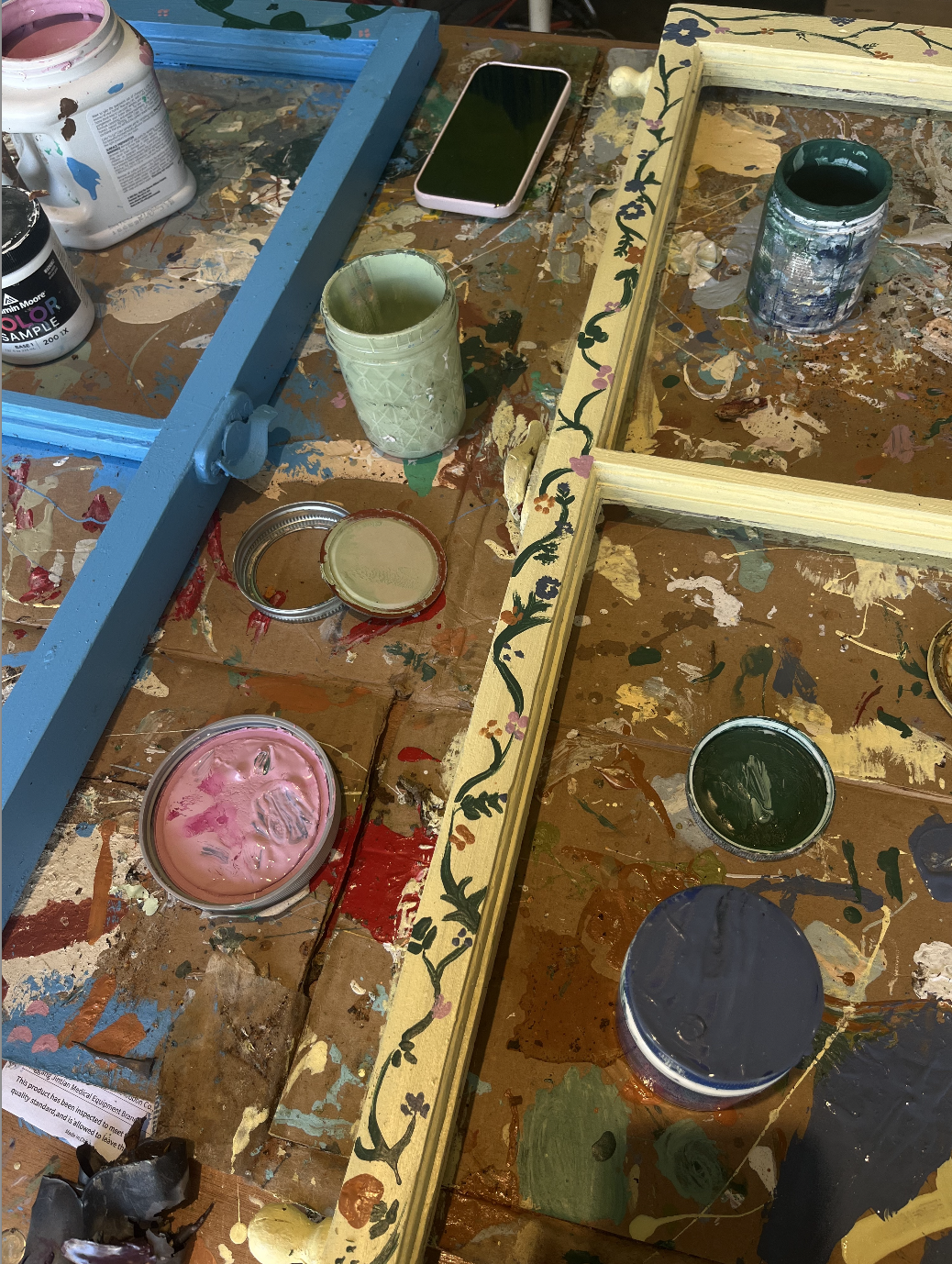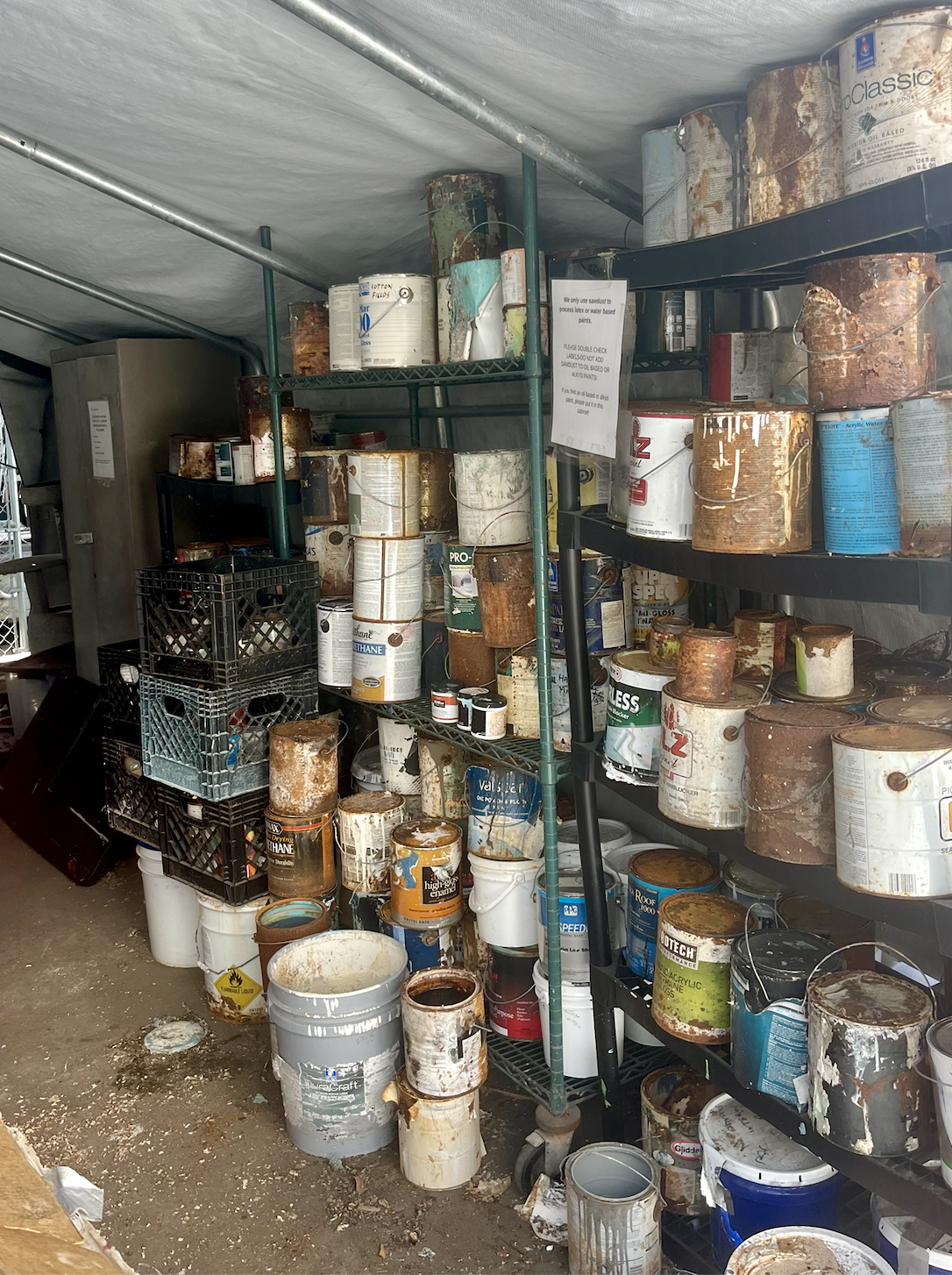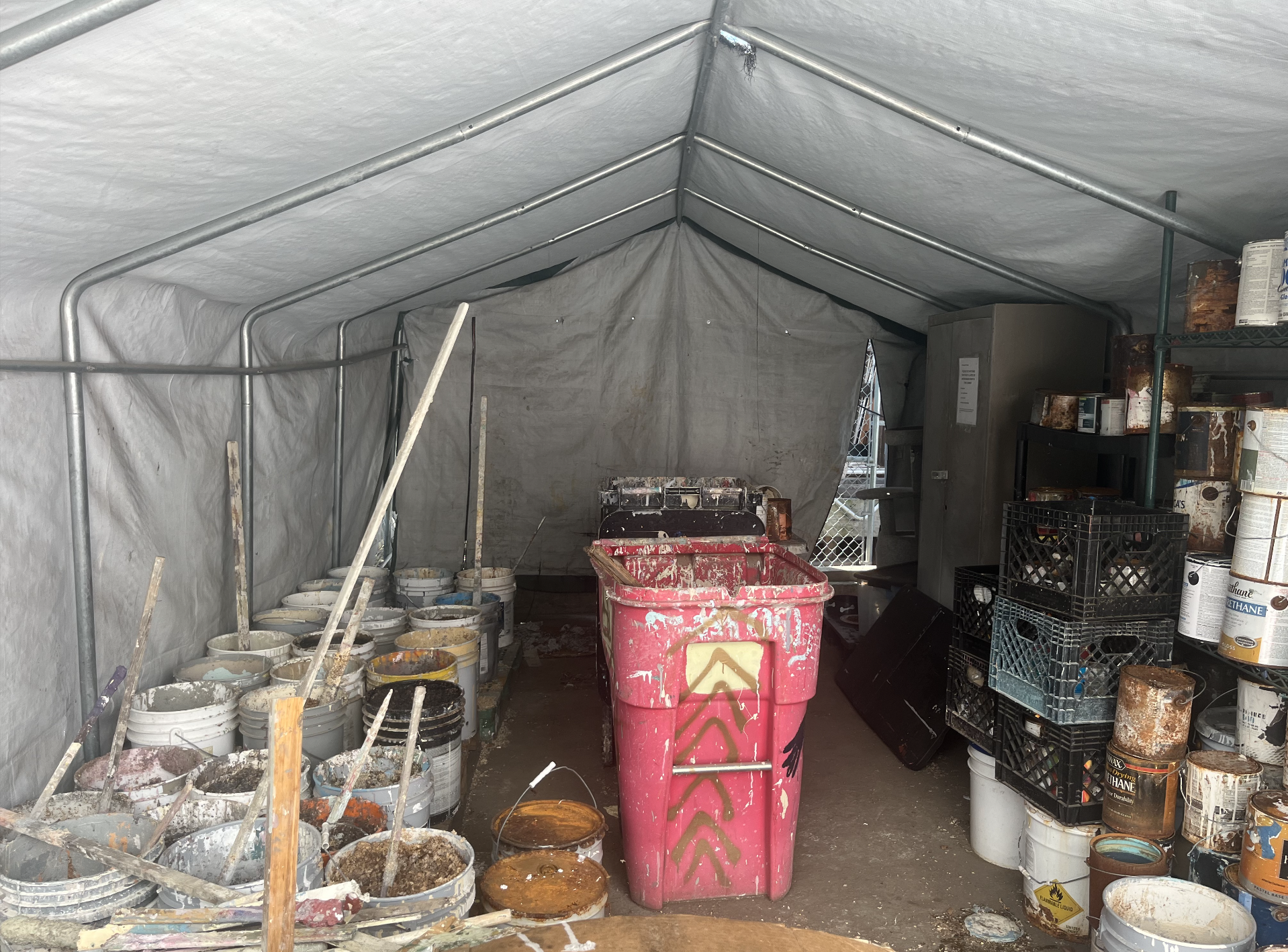By: Audrey Campisi, Betsy Schwartz, Arianna Pitt, and Fiona Welch
The history of New Orleans is one of a trying past. The city has survived disaster after disaster and is still standing; however, not without its challenges. The implications of racist attitudes and wealth-based stereotypes plague this city. The Green Project in the St. Roch neighborhood of New Orleans works to remediate some of the challenges that many people brush over. Their website self-defines as a “donation-based salvage store that also serves as an environmental education hub and paints recycling center.” Many public New Orleans schools do not have recycling programs, and their students often do not learn the importance and effectiveness of recycling.

Painted recycled window frames to be used in an educational Earth Day Celebration
The Green Project has come to serve as a recycling center for a portion of New Orleans’ underserved communities. Erin Genrich, the now environmental educator and outreach coordinator at the Green Project, joined the organization only months after Hurricane Katrina. Her initial position was as a cashier. She recounts this time where the store was “popping” as “people were bringing in donations right and left from houses they were gutting and people were shopping crazily to fix up their houses”. Their warehouse is set up as a store, with inventory ranging from windows and doors to wrenches and hammers–a donation-based Home Depot. All these materials are pre-used and sold at a discounted price to mitigate waste. In addition to their sales of pre-used building materials is the availability of affordable historical pieces, such as time-accurate window frames and shutters. These pieces are a pinnacle of historical New Orleans and necessary for those living in historic homes.

Paint cans at the Green Project.
New Orleans is one of the poorest cities in America. The unfortunate lack of funding can be seen anywhere from the potholes to the missing street signs. This does not prohibit people’s love for this city from shining through. The Green Project has stepped up to satisfy the needs of the city and its inhabitants. Genrich explains that the impact is nearly immeasurable, as “it is hard to calculate all the ways we have impacted this community. What we are doing today is not the same as what we were doing ten years ago. I think the fact that we are a reliable presence in a city that changes so much is pretty cool.” This stability is hard to achieve f0r a nonprofit organization, as funding and need often do not match. It has become a place for families to dispose of their toxic waste safely and efficiently. It was never the intention for the project to fill such a hole. However, over time the need was made clear, and the love of the city motivated the organization’s leaders to do what they could. This partnership has made the city a better place and given its citizens the necessary resources for survival.
New Orleans can afford minimal toxic waste pick-up days a year. Disposing of toxic waste, such as lead and acrylic paint, is extremely expensive. Although the New Orleans Department of Sanitation may prove interested in disposing of this waste, the politics and economy of New Orleans prevent them from doing so. The Green Project emphasizes that this is not explicitly the fault of New Orleans politics and that the non-profit works with and in support of the New Orleans Department of Sanitation. Nonetheless, privileged groups have greater access to the disposal of this waste, as they do not depend on public sanitation organizations to do so. Furthermore, the waste disposal locations have historically been placed in Black communities and lower income areas, which only perpetuates this cycle. Genrich states that “if people are dumping [toxic waste] down storm drains around here our storm drains lead unfiltered into Lake Pontchartrain, the Pontchartrain watershed. Even if they end up in the landfill, there may be an issue with lining, and then they are going into our waterways again.”

The Green Project’s toxic waste disposal tent. Contents are to be dropped off at the city’s singular household waste removal day.
The alternative that the Green Project developed works with intersectionality, as multiple issues that plague the city are being addressed in their toxic waste recycling. The non-profit organization relies on paint donations. These paints would otherwise pollute the environment or harm citizens and can now be reused. Working with hundreds of different used paints daily, the Green Project can create new colors to sell on the warehouse’s shelves. These paints are sold at discounted prices for affordable and environmentally friendly home supplies.
Overall, the Green Project is only a small example of what the United States and the entire New Orleans area can create. Through hardworking, forward-thinking citizens, creative solutions to under-serviced communities and issues can be found. The Green Project is just one example of the intersectionality that New Orleans as a city needs. From getting a taste of the inside, it is apparent that drive fuels the entire sustainability process of the non-profit organization. No feat established in the Green Project is without simple work completed by everyday individuals, only showing that the future of the Green Project, toxic-waste disposal, and recycling materials are bright. The Green Project is only getting started.
Please see the attached interview with the aforementioned Erin Genrich, where she speaks about her experience with the Green Project, waste recycling, and material reuse in New Orleans.
 NOLAbeings
Multimedia artist Claire Bangser created NOLAbeings as a portrait-based story project that marries...
NOLAbeings
Multimedia artist Claire Bangser created NOLAbeings as a portrait-based story project that marries...
 Data corner: Adobe Suite (create a PDF, social media graphic, presentation, edit a photo and video
Data corner is where you go to work with analytics and top tech skills. It takes on everything from PERL and SQL to Canva and Sprout Social.
Data corner: Adobe Suite (create a PDF, social media graphic, presentation, edit a photo and video
Data corner is where you go to work with analytics and top tech skills. It takes on everything from PERL and SQL to Canva and Sprout Social.
